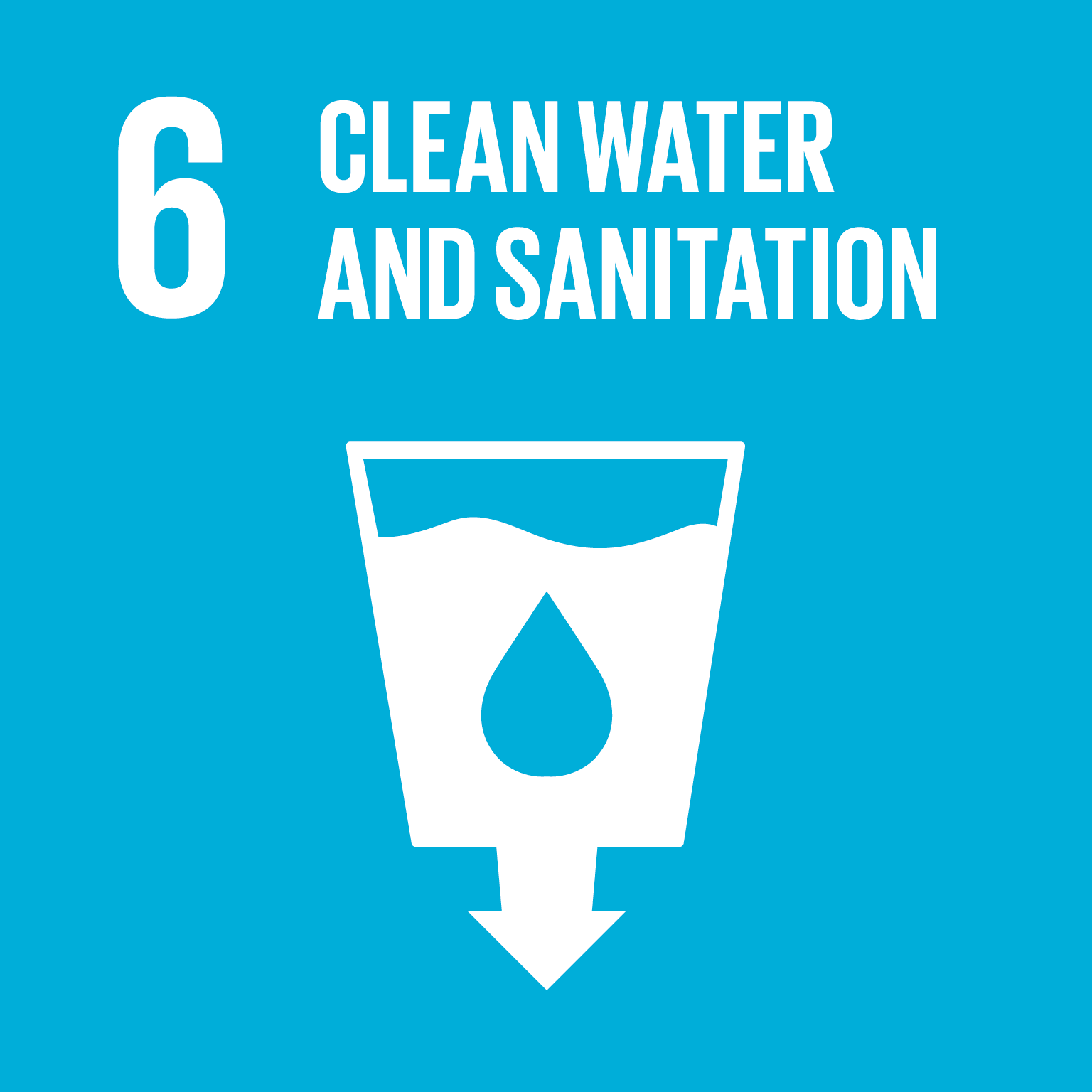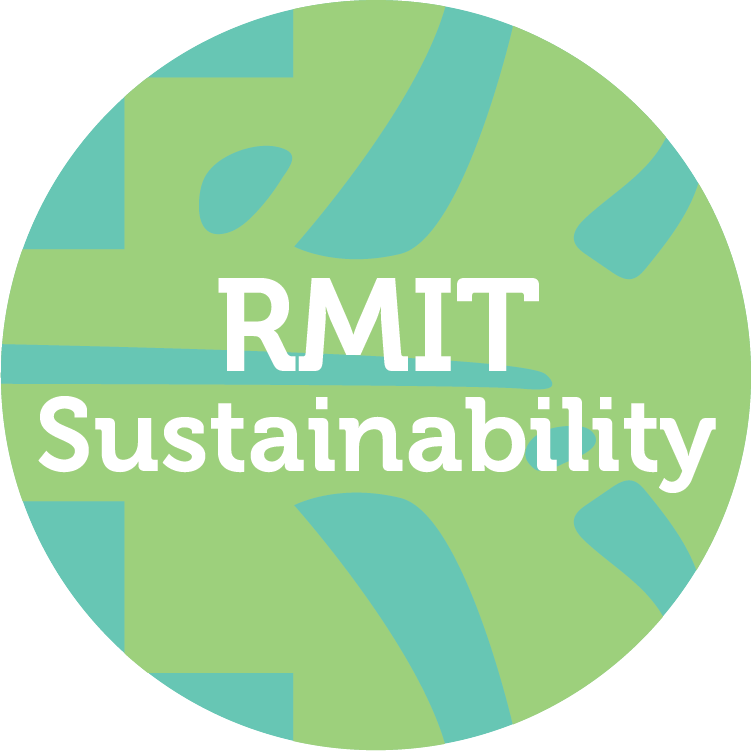RMIT University actively promotes the efficient use of water and the maximisation of water reuse across the University.
Promoting efficient use of water
The RMIT Sustainability Policy provides the guiding principle to minimise the consumption of resources through good design and reuse. Our sustainability policy drives our sustainability strategy and our environmental management system – The Property Services Environmental Management System was certified to ISO 14001 in 2019.
RMIT also actively promotes conscious water usage through messaging to the community such as sustainability campaigns promoting sustainable water use in our campus and in the wider community and encouraging people to report dripping taps and toilets.
In 2021, the University installed a further 441 sensors to existing bathroom taps, as part of the continued University response to COVID in reducing the number of touch points in high traffic locations. This project brings the total number of touchless taps to 965 and reduces the consumption of potable water as efficient taps are on for shorter periods of time.
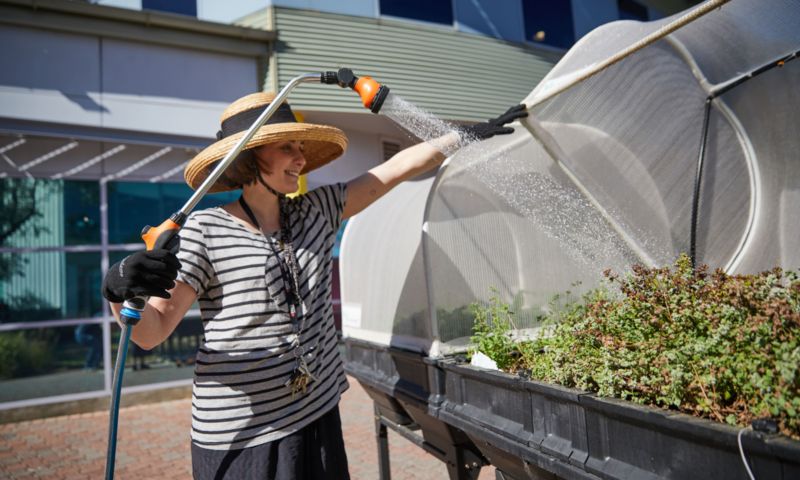
Measuring water use across the university
In 2021, RMIT consumed 173,488 kilolitres of potable water, this was significantly influenced by COVID-19 and the move to remote learning. The operational split between water consumption was:
- RMIT Australia operations consumed 119,628 kilolitres
- RMIT Vietnam operations consumed 53,860 kilolitres
- RMIT Europe (no data available)
RMIT does not record consumption volumes from alternative water sources, such as those harvested from stormwater or captured from rainwater. While these sources are used, they are not directly measured, instead, their use offsets the University’s requirements for potable water and is reflected by lower potable water consumption levels. The water efficiency levels in our Australian operations was 2,400 litres per EFTSL in 2021, this represents a 60% reduction in water consumption intensity per EFTSL compared to the 2007 baseline.
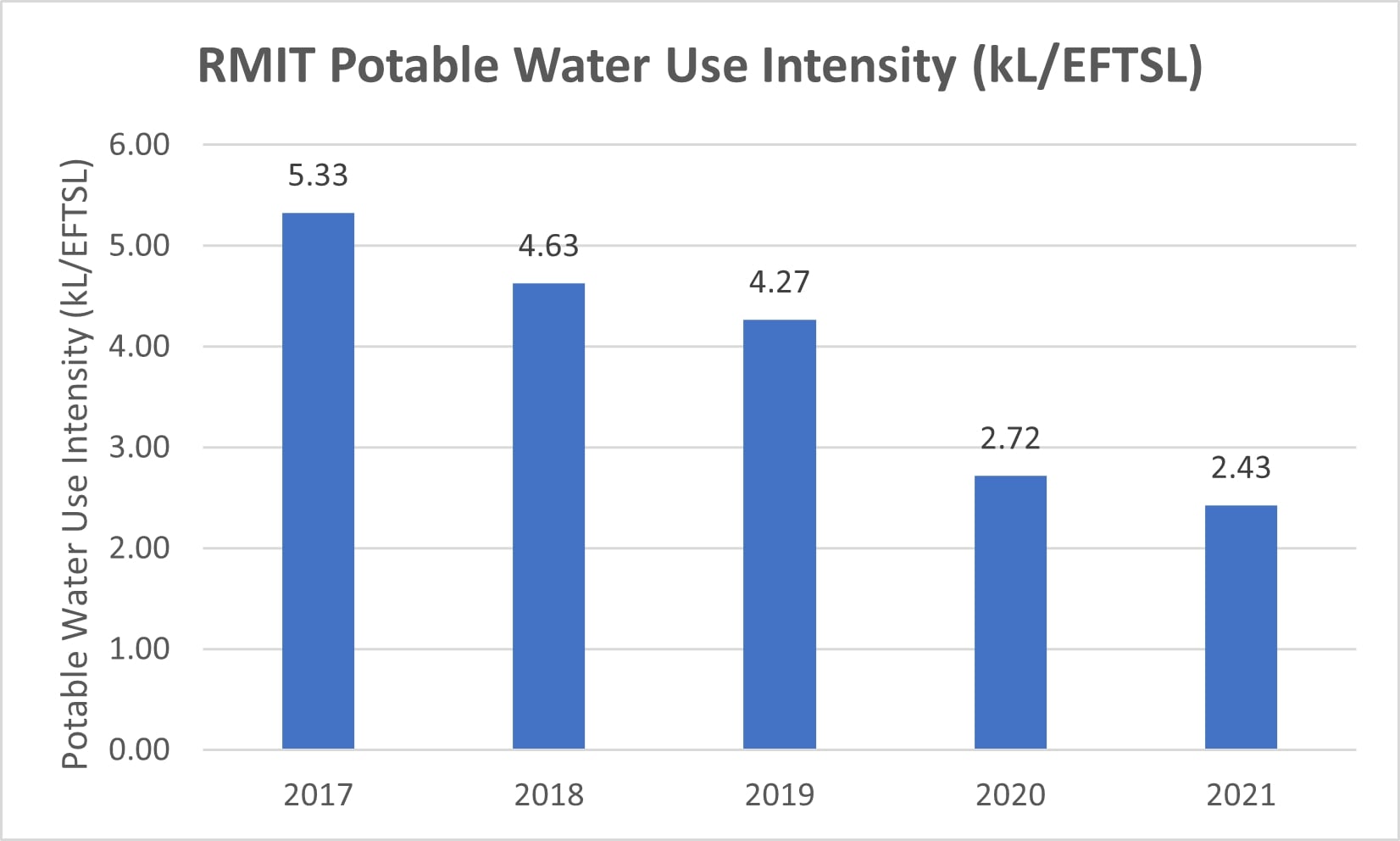
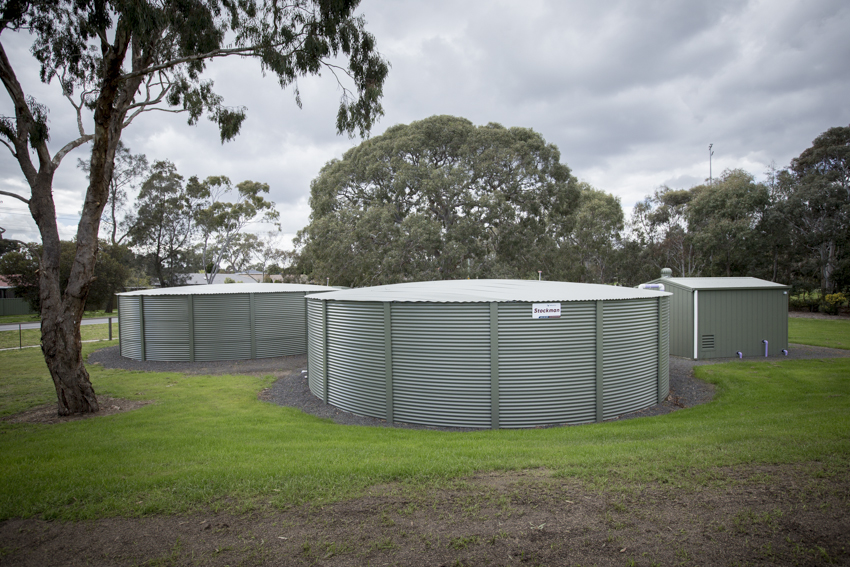
Wastewater treatment and preventing water system pollution
100% of RMIT's waste water is treated. All three Melbourne RMIT campuses are connected to the Central Business District grid and all waste water is collected and treated by The Melbourne Water, which is the local water authority, and the 3 metropolitan water retailers operating in Melbourne (Greater Western Water, Yarra Valley Water and South East Water).
Important to mention that there are also stormwater pits and greased traps installed at all RMIT campuses to avoid water pollution. Additionally, RMIT has developed its Hazardous Building Materials Management Plan for the management of hazardous building materials identified within the Australian property portfolio. This plan assists RMIT with managing hazardous materials related to health and environmental risks, including spillage of hazardous materials with potential to affect water quality - e.g. Lead-containing paint (LCP) and Polychlorinated biphenyls (PCBs), the Management Plan has a process for both disposal and emergency exposures/spills. In addition to this the OHSE Booklet for Contractors covers the process for reporting of environmental incidents, hazards and the management of chemicals and solvents by Contractors all which if managed incorrectly have the potential to affect water quality.
Water conscious planting
The University applies water conscious planting through the selection of drought tolerant planting in the urban environment. A recent example is the New Academic Street project which features two new rooftop garden terraces extensively planted in drought tolerant evergreen plants such as low ferns, bamboos and flowering groundcover. These require minimal water to maintain, reduce the urban heat island effect and provide relaxing areas for the RMIT community.
RMIT also encourages the use of indigenous plant species, which are drought tolerant plants to minimise water usage. For example the Keelbundoora Scarred Trees and Heritage Trail green spaces located at the RMIT Bundoora campus.
Free drinking water
RMIT has 117 drinking fountains across our campus and an estimated 187 refill taps in kitchens and kitchenettes, providing students, staff and visitors with free drinking water.
RMIT developed a free navigation app that provides a list of the water fountains available in our campuses by building for students and staff. A Navigation webpage is also available for students, staff and members of the community to identify water fountains located at RMIT campuses.
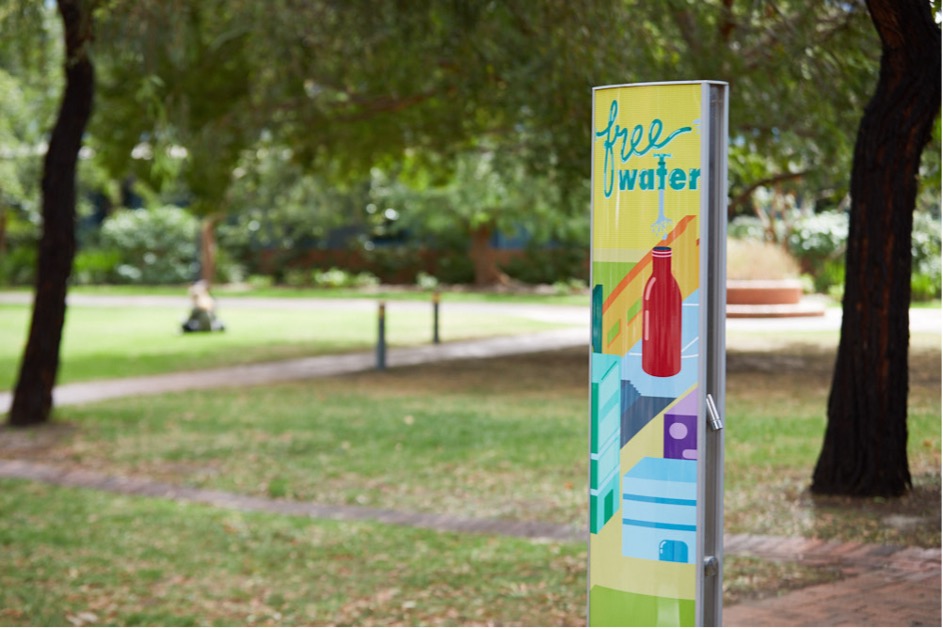
Water-conscious building standards
RMIT uses the Design Standards to drive decision making around water efficiency. Including setting minimum standards fixtures, water capture and storage and water sensitive urban design in landscaping .Our Design Standards promotes innovation in design and actively promotes sustainable building principles, including water efficiency.
The purpose of the Design Standards is to set out RMIT’s expectations for the operability serviceability, maintainability and aesthetic approach of built environments across all RMIT University campuses. The Design Standards includes RMIT’s social and cultural expectations, through urban design and planning, architectural and engineering design requirements, Occupational Health and Safety (OH&S), Access for People with a Disability and Sustainability.
See the Sustainability Annual Report for more information about our sustainability performance.

Get in touch
For more information or to discuss partnership and collaboration opportunities, email us at SDGs@rmit.edu.au.
For more information about RMIT’s sustainability commitments and activities visit www.rmit.edu.au/sustainability
